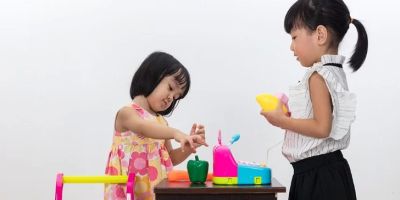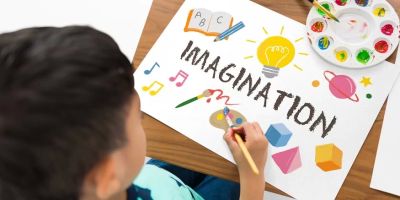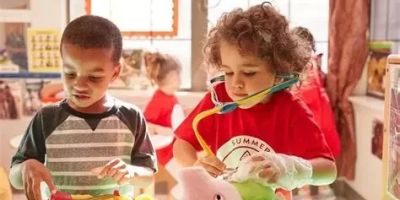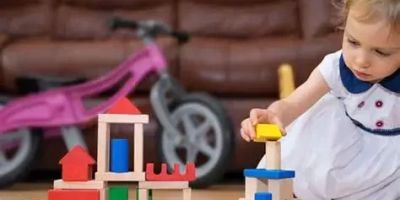The Importance of Toys in Enhancing Motor Skills in Children
As a parent or caregiver, you’ve probably wondered how best to support your child’s growth and development. One of the most effective ways to do this is through play, especially with toys designed to enhance motor skills. Motor skills, both fine and gross, are critical for your child’s physical, cognitive, and emotional growth. From building towers with blocks to running around with a ball, toys help children develop essential abilities that will last a lifetime. In this article, I will share the importance of toys in improving motor skills and explore how various toys can support these skills in fun and engaging ways.
The Power of Play: How Toys Shape Motor Skills
Motor skills can be divided into two broad categories: fine motor skills and gross motor skills. Fine motor skills involve smaller, more precise movements, such as using fingers to hold a pencil or picking up small objects. Gross motor skills, on the other hand, involve larger movements that engage larger muscle groups, like running, jumping, and throwing. Both types of motor skills are crucial for a child's development and are often nurtured through toys.
As children interact with toys, they use their hands, arms, and even whole bodies, which helps strengthen muscles, improve coordination, and develop control. These activities are not just fun—they lay the foundation for critical tasks later in life, like writing, dressing, or playing sports. Let’s dive into how different types of toys contribute to this growth.
1. Toys that Enhance Fine Motor Skills
Fine motor skills are essential for tasks that require dexterity and hand-eye coordination. These skills are often developed through activities that involve small, controlled movements of the hands and fingers. Toys that focus on fine motor skills often encourage children to use their hands in intricate ways, refining their muscle control and precision.
Building Blocks: One of the best examples of toys that promote fine motor skills is building blocks. Whether it’s stacking blocks to form a tower or assembling a complex structure, children are constantly using their fingers to grasp, balance, and arrange pieces. This repetitive motion improves their hand-eye coordination and strengthens the small muscles in their hands and fingers.
Art and Craft Supplies: Simple art and craft activities can have a profound impact on fine motor skills. Whether it’s drawing with crayons, cutting shapes with scissors, or threading beads, these activities require children to manipulate objects with precision, improving their fine motor control.
Puzzle Games: Puzzles are another excellent way to boost fine motor development. As children work to fit pieces together, they improve their hand-eye coordination, problem-solving skills, and dexterity. The act of turning and fitting puzzle pieces also strengthens the small muscles in their hands and fingers.
2. Toys that Promote Gross Motor Skills
Gross motor skills involve larger movements that engage the entire body. These skills are essential for activities such as running, jumping, climbing, and playing sports. Toys that promote gross motor skills often encourage children to move, jump, or run, helping to improve their strength, coordination, and balance.
Tricycles and Bikes: Riding a tricycle or a bicycle is a fantastic way to develop gross motor skills. Pedaling helps build leg strength, and balancing on the bike improves coordination and stability. Riding also encourages children to engage in physical activity, contributing to overall fitness.
Jump Ropes: Jumping rope is a classic toy that helps children develop coordination and balance. As they jump over the rope, they improve their rhythm, agility, and timing. The activity also strengthens their legs and cardiovascular system.
Sports Equipment: Simple sports toys like soccer balls, basketballs, or soft foam balls are great for helping children improve their gross motor skills. Kicking, throwing, and catching these balls helps develop hand-eye coordination, balance, and strength. Additionally, engaging in sports activities builds teamwork and social skills, further enhancing their overall development.
3. The Social and Emotional Benefits of Motor Skill Development
In addition to physical benefits, toys that improve motor skills also have a positive impact on a child's social and emotional development. When children engage in play with others, they learn how to share, take turns, and communicate effectively. These experiences help foster a sense of self-confidence and resilience, which are key elements of emotional development.
Collaborative Play: Toys that encourage children to work together, such as building sets or team sports, foster collaboration. These types of play not only improve motor skills but also teach children the value of teamwork, patience, and empathy. For example, playing a game of catch or building a fort together helps children understand how to work as part of a group while developing motor coordination.
Independence and Confidence: As children master new motor skills through play, they gain a sense of independence and accomplishment. Whether it’s successfully building a tower without help or learning how to ride a bike for the first time, these achievements boost their self-esteem and make them feel proud of their progress.
4. Selecting the Right Toys for Motor Skill Development
Choosing the right toys for your child can be a bit overwhelming, but it’s important to focus on toys that are developmentally appropriate and safe. Look for toys that challenge your child’s abilities without causing frustration. Here are a few tips for selecting the best toys to support motor skill development:
- Choose toys that require manipulation of small parts for fine motor skills, like puzzles, blocks, or shape sorters.
- Select toys that encourage physical activity for gross motor skills, such as bikes, jump ropes, or balls.
- Consider your child’s age and developmental stage when selecting toys. A toddler may benefit from stacking rings or push toys, while an older child may be ready for more complex puzzles or sports equipment.
- Ensure the toys are safe, with no small parts that could pose a choking hazard, and that they meet all safety standards.
5. Real-Life Example: My Experience with Toy-Based Motor Skill Development
Let me share a personal story about how toys helped my child, Emma, develop motor skills. Emma was always a curious and energetic toddler, but she struggled with fine motor skills, especially when it came to holding a pencil or using scissors. I noticed that she would get frustrated when trying to complete tasks that required precision. So, I decided to introduce some fun toys that could help her improve these skills.
We started with building blocks, and I made sure we spent time each day stacking, arranging, and knocking them down. At first, Emma struggled, but over time, her dexterity improved, and she was able to build taller and more stable towers. We also spent a lot of time doing art activities, and I noticed her grip on crayons and scissors become more confident as she practiced.
Within a few months, Emma’s fine motor skills had noticeably improved, and she began to enjoy tasks she once found challenging. It was a rewarding experience to see how something as simple as toys could make such a difference in her development.
In conclusion, toys are not just fun—they’re essential tools for promoting motor skill development in children. By selecting the right toys and encouraging active play, we can help children strengthen their fine and gross motor skills while having a blast. Remember, the next time you choose a toy for your child, think about how it can support their physical growth and enrich their developmental journey.





